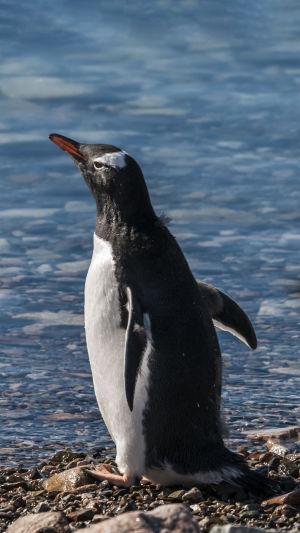The discovery of penguins can be traced back to the end of the fifteenth century when they were first seen by a group of sailors from Portugal, rather than by biologists or archaeologists.
When the sailors passed the Cape of Good Hope, they saw a black and white animal that no one knew about. It was not until thirty-eight years later when the historian Pigafita and the Magellan fleet sailed to the coast of Patagonia and saw this unknown creature again, that penguins began to be recorded by humans.
Penguins are representative creatures of the Antarctic and are household names among humans. Their cute appearance, flightless wings, and antics are all topics that people talk about.
However, you may not be familiar with penguins as a creature. Here are some surprising facts:
Penguins have a unique structure: their feathers are three to four times denser than those of birds of the same size, and these feathers regulate body temperature. Although penguin feet are basically the same as those of other birds, they are hard-boned and relatively short and flat.
This feature, combined with short paddle-like wings, enables penguins to "fly" underwater. Although the Antarctic is very cold, penguins have experienced tens of millions of years of blizzards, and their feathers have become overlapping, tightly connected scales.
This special coating is not only impenetrable to seawater but also cannot be penetrated by its insulation line even at a temperature of nearly 100 degrees Celsius below zero. There is a lot of land in Antarctica, and the sea there is very wide. The rich marine plankton has become a rich food for penguins.
Penguins cannot fly because they have adapted to living in the ocean. Generally speaking, a penguin spends half of its life in water and the other half on land. Therefore, penguins have very strong swimming ability.
On average, a penguin can swim at a speed of 6-10 kilometers per hour, and an emperor penguin can swim at a speed of 12 kilometers per hour. The fastest swimmer found so far is the Gentoo penguin, which can even reach a swimming speed of more than 30 kilometers per hour.
There are 19 species of penguins in the world, most of which live in Antarctica. But there is a species called the Galapagos penguin that lives near the equator, and the climate there is very hot. Galapagos penguins pant quickly every day, similar to dogs, to dissipate heat.
In a penguin family, the male penguin is responsible for incubating the eggs, while the female penguin is responsible for going out to fish. This is because the fat content of male penguins is much higher than that of female penguins. Because the penguin "father" can go many days without eating and still maintain body temperature.
One interesting fact about penguins is that they are loyal to their mates. Someone once spent more than 10 years observing nearly a thousand penguins and found that 82% of the penguins still maintain their original mates, and one pair has lived together for 11 years.
Penguins are fascinating creatures that have adapted well to the harsh environment of the Antarctic. Their unique features, swimming ability, and loyalty make them one of the most interesting animals in the world.





